Liquid Sky (1982)
“Everybody wants euphoria. What’s wrong with that?”
|
Synopsis: |
|
Genres, Themes, Actors, and Directors:
Review: What an origin story! The resulting film is “a bizarre blend of science fiction, social satire, and the underground-experimental film,” all of which made it “an ideal midnight movie: weird costumes, hair, and makeup”: … “pulsating music (played on the Fairlight Computer Musical Instrument at New York’s Public Access Synthesizer Studio); off-the-wall scenic design (Margaret’s garish penthouse is lit by neon signs on the walls)”: … “special effects; a story involving sex and drugs; and a nonconformist lead character in the throes of an identity crisis.” Interestingly, the distribution company CineVista “wisely chose to distribute it as a regular feature” and “it became a modern commercial success in New York, Boston, and L.A. in a second run.” It also “immediately attracted a repeat audience, particularly at the Waverly in New York’s Greenwich Village” — and “ironically, its most devoted fans were from the specific New Wave-punk subculture that is mercilessly ridiculed in the picture.” Peary asserts that the point Tsukerman “wanted to make is that New Wavers who use hard drugs and have sex without worrying about transmittable diseases are on a death trip.” (On that note, this film was released just before the AIDS pandemic began — and its star, Carlisle, ended up leaving the acting industry to train as an art therapist in response to this crisis.) Peary notes that the hedonist characters in this film “court death” and “so want to achieve sensual euphoria (the film’s title is junkie slang for heroin ecstasy) that they overlook the risks involved;” they “are smart people who have stopped thinking.” How does an alien spacecraft play a part in all this? Well, the alien (who we never see) “absorbs a heroin-like substance that is created in the brain at the moment of orgasm,” which we view through the alien’s eyes. Peary writes that ultimately, “the alien serves as an avenging angel for Margaret, killing all those who sexually use and physically abuse her, and finally becomes her deus ex machina, rescuing and liberating her from her trapped, hopeless existence.” (This is “a rare film in which being abducted by an alien seems like a great choice for the protagonist.”) Noting that “we can deduce what happened to Margaret in her past,” Peary postulates that she “rebelled against her traditional upbringing”: … “and, asserting her independence, came to New York to make it as an actress and model,” mingling “with those on the fringes of respectability” — however, she “was disappointed to discover that “even among these ‘enlightened’ people, she was still expected to act in a certain way.” Once she “ventured into the more extreme New Wave-punk life-style,” she was once again molded to “become like everyone else in the scene — she took drugs, took a lesbian lover, featured an androgynous look, became a ‘mean bitch’… and became the symbol of the life-style,” much like “an Edie Sedgwick figure, bored and drugged out of her mind, surrounded by an uncaring, pretentious art crowd… which she knows will drop her as soon as her star fades.” However, “what distinguishes Margaret from the vile people she associates with” is that “she realizes… it has all gone wrong.” While “New Wavers may have fled the roles that society set up for them… they have fallen into equally confining, impersonal roles”; and though “they believe their every act is an expression of free will, they have fallen into traps as deep as those in the outside world.” In essence, “Margaret figures out that being fashionable is just as restrictive as being traditional, that being androgynous eradicates one’s identity, that men at all levels of society want to demean and control women, and that women who hate women, as does Adrian [Sheppard], can be just as destructive to her as men who hate women.” Peary points out that “besides the interesting themes, there is much appealing in the film,” including “superb” performances by Carlisle, impressive cinematography and special effects by Yuri Neyman (particularly “the other-worldly shots of the New York skyline, with the Empire State Building spire looking like a giant syringe”), “imaginative” direction by Tsukerman,” and a script by Tsukerman, Carlisle, and Kerova that “is witty and… poignant.” Meanwhile, “the amusing scenes with Johann [von Wernherr]” — a “completely incompetent hero” — “will delight all fans of sci-fi and horror movies.” Peary concludes his essay by noting that while he thinks “the film wears out long before the alien departs,” he does “enjoy Liquid Sky.” However, “it’s not that easy to recommend,” for several reasons, including the fact that “everyone who has sex in it is destroyed,” and “despite the abundance of humor, it’s a mean film, with ugly characters, ugly language, and ugly images.” It most definitely “becomes disturbing watching Margaret repeatedly slapped in the face by various men, even if Carlisle’s also playing one of them, Jimmy.” I’m essentially in agreement with Peary’s take on this film. I didn’t expect to get as caught up in it as I did, and appreciate that it’s so polished for an experimental film (which makes sense given Tsukerman’s prior decades of experience with filmmaking) — however, it’s filled with many distressing, hard-to-watch scenes. It’s especially unnerving seeing Sheppard — star of Alice, Sweet Alice (1977) — in her second and only other film role playing such an unrepentant bastard. With that said, film fanatics will surely want to check this unique film out once, even if it’s disturbing in many ways. Notable Performances, Qualities, and Moments:
Must See? Categories
Links: |





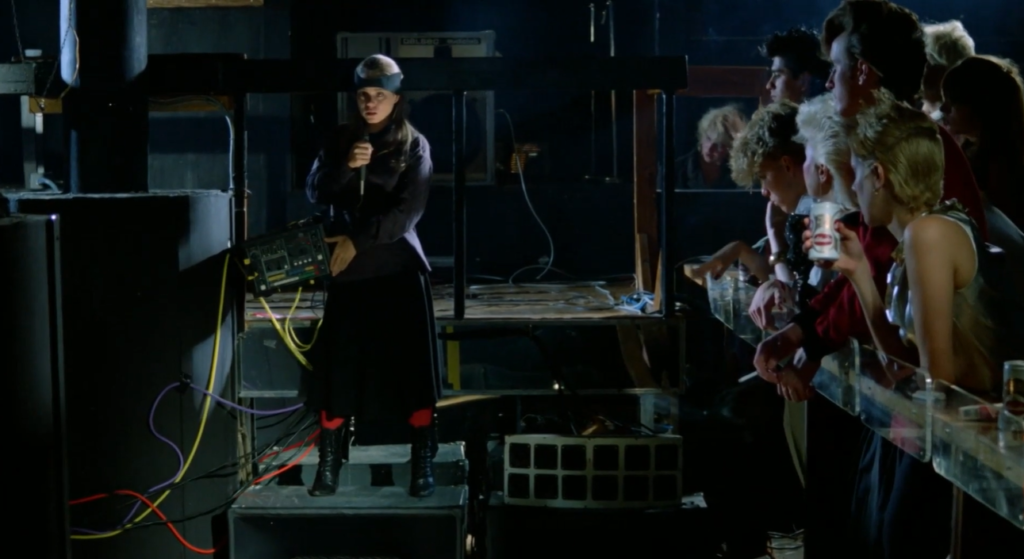
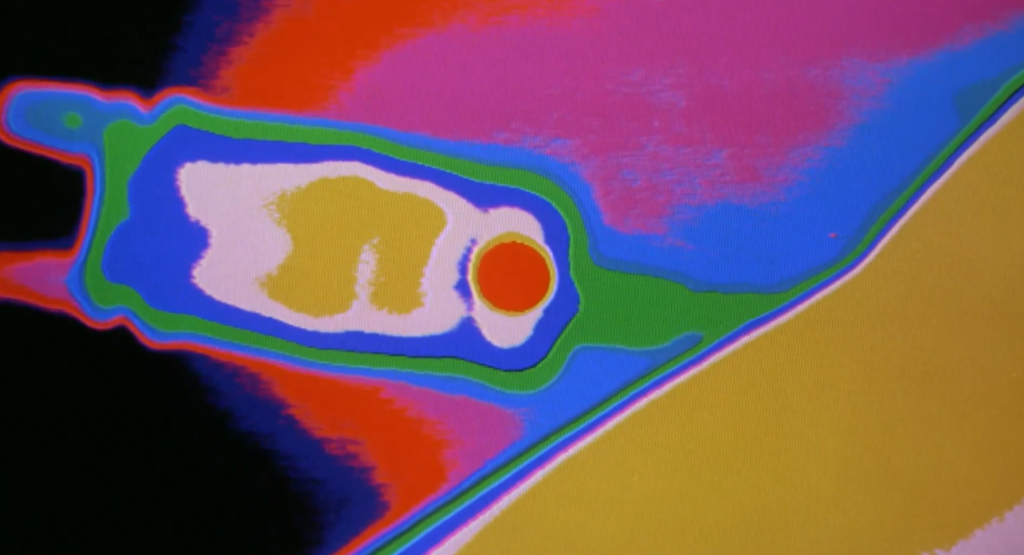


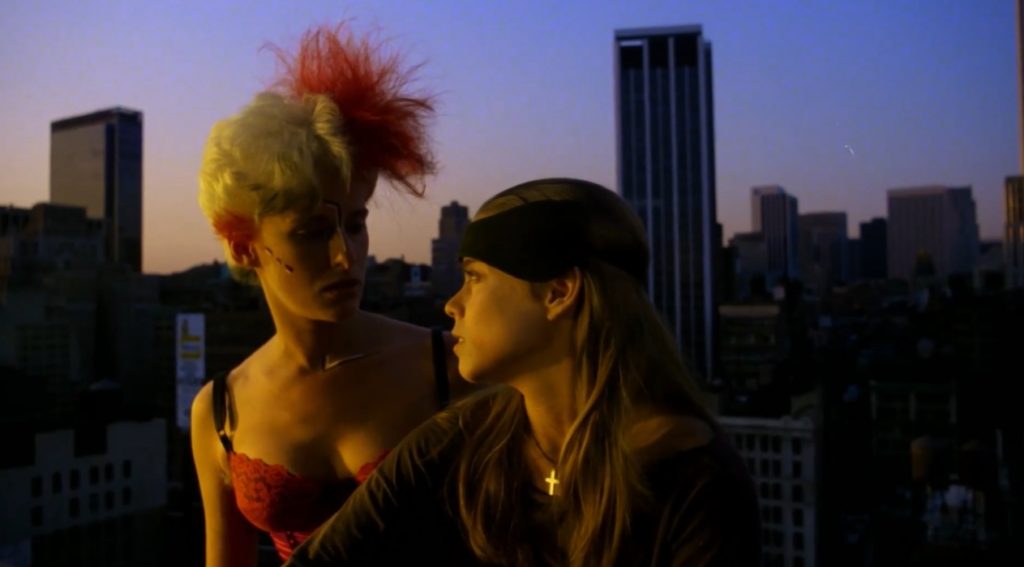
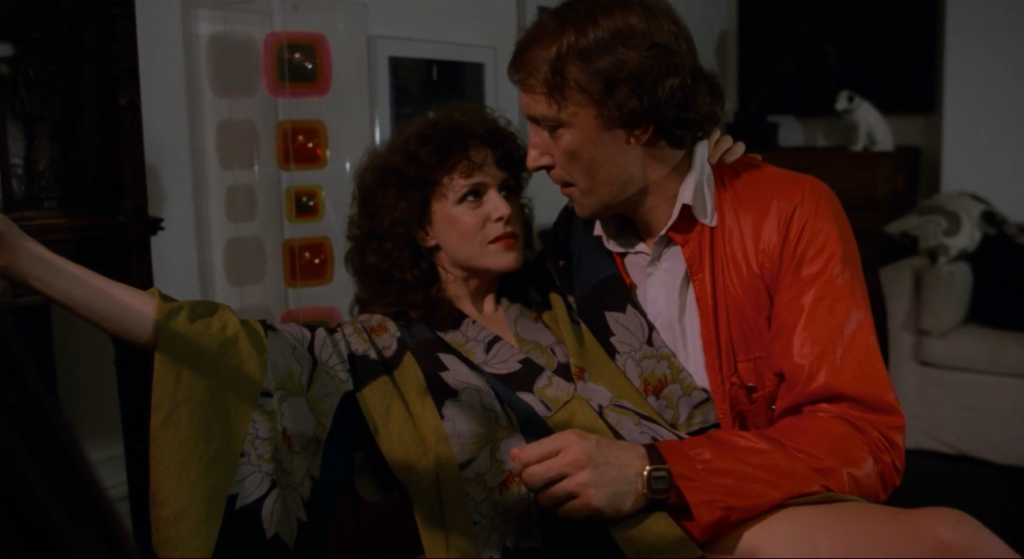
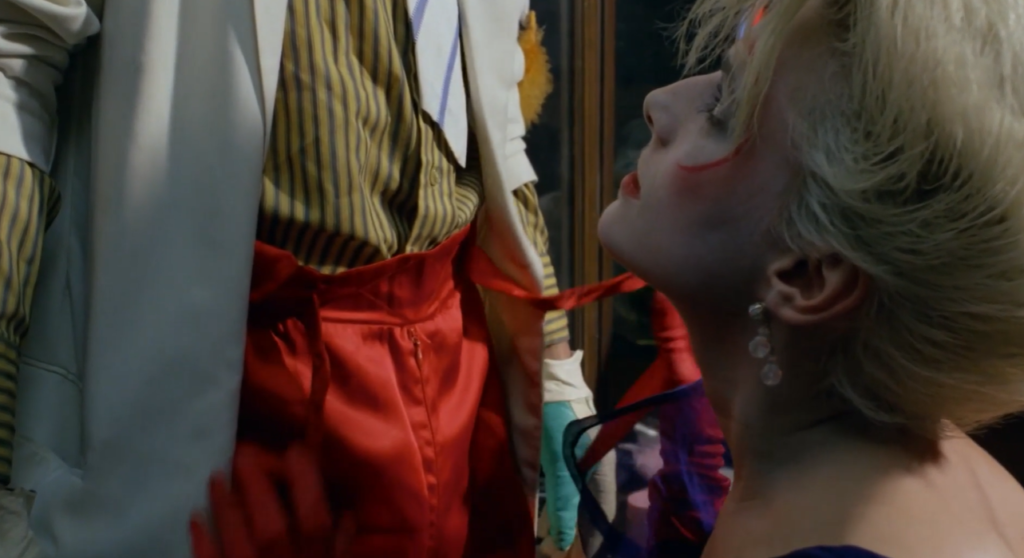
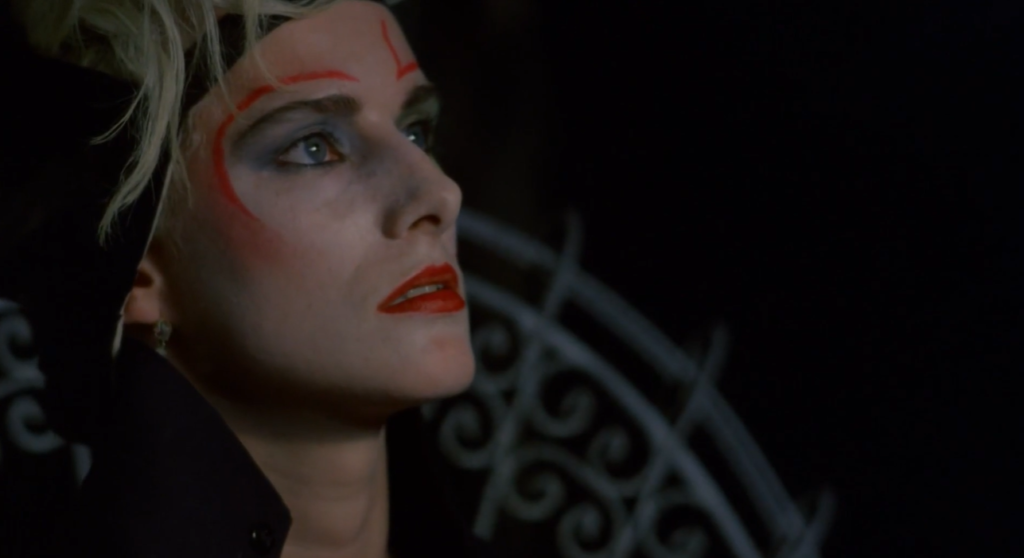
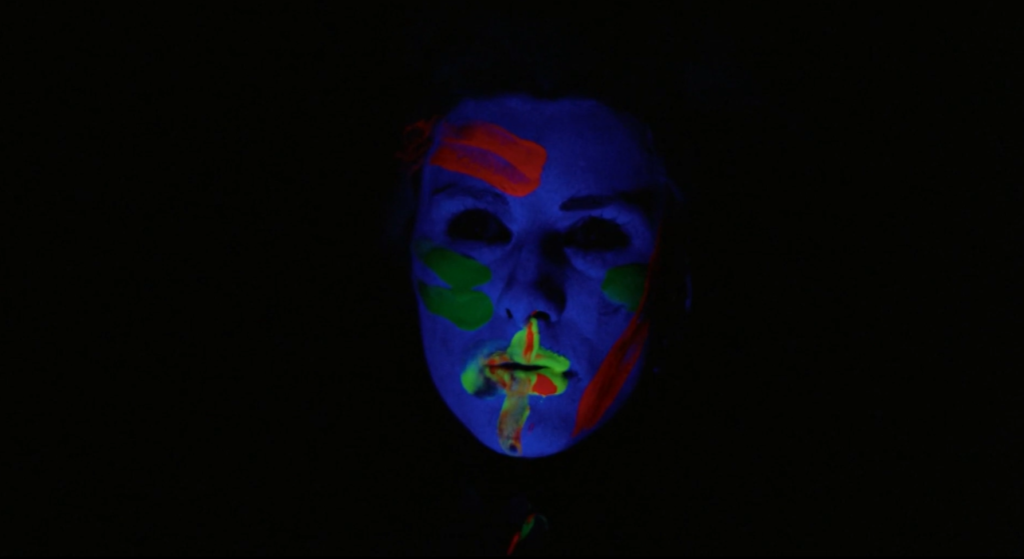
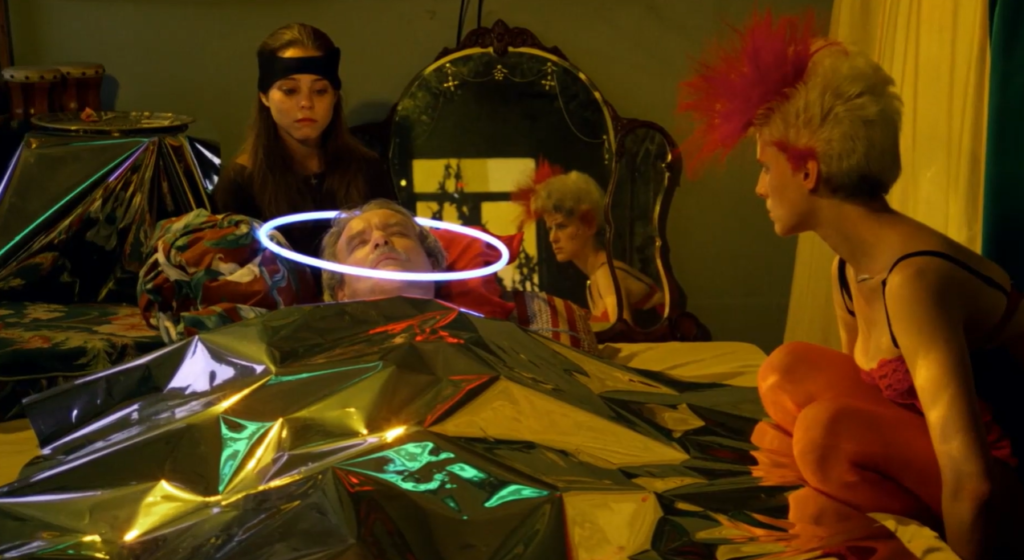
One thought on “Liquid Sky (1982)”
Rewatch. Must-see – and worthy of repeat viewings. As posted in ‘Revival House of Camp & Cult’ (fb):
“You wanted to know where I’m from. I’m from Connecticut. Mayflower stock. I was taught that my prince would come. And he would be a lawyer. And I would have his children. And on the weekend we would barbecue. And all the other princes and their princesses would come. And they would say, ‘Delicious!, delicious!’ Oh, how boring.”
‘Liquid Sky’ (1982): When it was released, ‘LS’ became arguably the most successful independent film of its time. Made on a meager budget of $500,000, it soon made $1.7 million worldwide, first commercially then as a midnight movie darling (winning festival awards along the way).
I saw it at NYC’s Waverly Theater, home to countless cult films. In retrospect, ‘LS’ reads as an unintended warning re: the impending scourge of AIDS. A main element of the storyline equates sex with death.
Yet, it’s mainly a freewheeling, style-to-spare sci-fi flick about aliens seeking an ‘opiate’ believed to exist in the brain, one that’s released at the time of orgasm. This may sound weirdly and abstrusely technical but, at its base, the film isn’t – even though it was made by an award-winning Russian documentarian (Slava Tsukerman) with a background in civil engineering and a noted Russian DP (Yuri Neyman).
Co-written by Tsukerman, Nina V. Kerova and – starring in a dual role – club scene habitué Anne Carlisle, ‘LS’ reflects everything mindlessly excessive about the ’80s. There is a tendency to look back on the ’80s as a decade dominated by innocuous John Hughes movies – forgetting that it was Oliver Stone’s ‘Wall Street’ in which Michael Douglas prophesied “Greed is good!”
Looked at today, the film holds up amazingly well. Its plot can feel scattered but ultimately it comes together cohesively and admirably. By turns, it’s harsh / vulgar and mordantly incisive in its humor.
Co-star Paula E. Sheppard showcases a wild, anarchic energy in her second and last film performance, after her appearance in the 1976 cult horror classic ‘Alice, Sweet Alice’. (Both Carlisle and Sheppard left the film world to pursue other interests.)